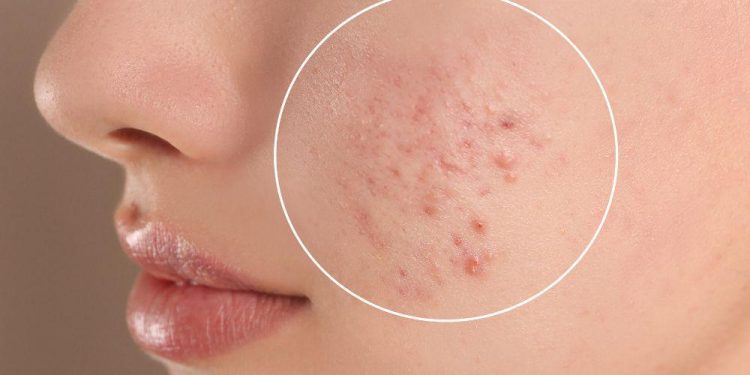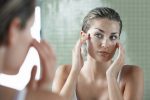Understanding Acne: Causes, Types, and Effective Treatment Options

Acne is one of the most common skin concerns affecting people of all ages, though it is particularly prevalent during adolescence. For many, it’s more than just a few spots or blemishes; it can be a persistent skin issue that affects self-esteem and mental well-being. While acne is often dismissed as a teenage problem, it’s important to understand that adult acne is also a widespread condition in the UK. From mild whiteheads to severe cystic outbreaks, acne can vary significantly in its appearance, severity, and causes. Fortunately, a range of modern treatment options can help manage and, in many cases, eliminate this skin condition effectively. This blog will explore the root causes of acne, the different types, and the most effective treatments available today, including options for acne scar treatment and specific concerns such as back acne.
What Causes Acne?
Acne is a complex skin condition caused by the interplay of several factors. At the heart of the problem lies the hair follicle, or the pilosebaceous unit, which includes the hair follicle and the sebaceous (oil) gland. When this unit becomes clogged with excess sebum (oil), dead skin cells, and bacteria, it leads to inflammation and acne.
Primary causes include:
- Hormonal Fluctuations: During puberty, and for some during the menstrual cycle, pregnancy, or due to conditions like polycystic ovary syndrome (PCOS), hormonal changes can increase oil production in the skin.
- Excess Sebum Production: Overactive sebaceous glands can flood the skin with oil, which mixes with dead skin cells and clogs pores.
- Bacterial Growth: Propionibacterium acnes is a bacterium that naturally lives on the skin but can multiply in clogged pores, leading to inflammation.
- Dead Skin Cells: When not shed properly, dead cells accumulate on the skin’s surface and contribute to pore blockages.
- Lifestyle Factors: Stress, poor diet (especially high-glycaemic foods), and the use of comedogenic skincare or makeup products can exacerbate acne.
Understanding these underlying causes can help tailor the most effective treatment strategy, rather than just addressing the symptoms.
Types of Acne
Not all acne looks the same, and each type may require a different treatment approach. Recognising the various forms helps in diagnosing the severity and choosing appropriate treatments.
The main types of acne include:
- Comedonal Acne: Characterised by whiteheads (closed comedones) and blackheads (open comedones). These are non-inflammatory lesions typically found on the forehead, chin, and nose.
- Papules and Pustules: Small red or pink bumps (papules) and those filled with white or yellow pus (pustules) represent inflammatory acne and can be painful.
- Nodules and Cysts: These are deep, painful lumps under the skin that can lead to significant scarring. This form of cystic acne often requires prescription treatment and sometimes medical procedures.
- Acne Conglobata: A severe, uncommon form that presents as large, interconnected nodules and cysts, primarily on the back, chest, and buttocks.
Each of these types can appear on the face, chest, shoulders, and back. Back acne is particularly common in individuals who are physically active or sweat frequently, and may require specialised back acne treatment.
Acne in Teenagers vs. Adults
While teenage acne is usually linked to puberty, adult acne often stems from hormonal imbalances, stress, and sometimes underlying medical conditions. Unlike teenage acne, adult acne often appears on the lower face, jawline, and neck.
Teenage acne characteristics:
- Primarily comedonal and pustular
- Common on the forehead and cheeks
- Triggered by hormonal surges during puberty
Adult acne characteristics:
- Often cystic and inflammatory
- Concentrated around the jaw and chin
- Associated with stress, hormonal changes, or unsuitable skincare routines
Regardless of age, acne can significantly affect one’s confidence, making effective treatment all the more important.
Effective Acne Treatment Options
Treating acne involves more than just targeting pimples on the surface—it requires a holistic strategy that addresses the underlying causes, prevents recurrence, and reduces scarring.
Common and effective acne treatments include:
- Topical Treatments: Over-the-counter products containing benzoyl peroxide, salicylic acid, or retinoids can help reduce oil production, unclog pores, and fight bacteria.
- Prescription Medications:
- Topical retinoids and antibiotics
- Oral antibiotics such as doxycycline or lymecycline
- Hormonal therapy, including contraceptive pills for women
- Isotretinoin (Roaccutane) for severe, treatment-resistant cases
- Chemical Peels: Peels with salicylic acid or glycolic acid exfoliate the skin and can improve mild to moderate acne.
- Laser and Light Therapies: These target bacteria and reduce oil production while also improving skin texture.
- HydraFacial and Microdermabrasion: Gentle yet effective treatments to clear congested pores and revitalise the skin’s surface.
In cases where the acne has healed but left behind damage, acne scar treatment options like microneedling, laser resurfacing, or dermal fillers can restore smoother skin.
Tailoring Treatment for Back Acne
Acne on the back, sometimes known as “bacne”, presents a unique set of challenges due to the skin being thicker and harder to reach. Sweat, friction from clothing, and heavy moisturisers can aggravate this area. As a result, treatment for back acne often needs to be more intensive and consistent.
Back acne treatment options may include:
- Medicated body washes with salicylic acid or benzoyl peroxide
- Topical antibiotics or retinoids prescribed by a dermatologist
- Laser therapy to reduce inflammation and kill bacteria
- Regular exfoliation to remove dead skin build-up
Clinics such as Skintique Clinic offer advanced back acne treatment options tailored to individual skin types and severity levels.
Preventing Acne Flare-Ups
While genetics and hormones play a role, certain lifestyle habits can help minimise acne outbreaks and support clearer skin.
Tips to prevent flare-ups:
- Cleanse regularly, but avoid over-washing, which can irritate the skin
- Choose non-comedogenic products (those that don’t clog pores)
- Avoid touching your face unnecessarily
- Wash pillowcases and towels regularly to reduce bacterial build-up
- Shower after exercise to remove sweat and bacteria
- Maintain a balanced diet, limiting sugary and highly processed foods
Consistent skincare habits paired with professional treatment can greatly improve acne over time.
Acne Scarring and Long-Term Skin Care
Even after active acne has cleared, many individuals are left with scars that serve as a lasting reminder of their skin struggles. Acne scars can be flat or raised, pigmented or red, and some may involve deep pitting.
Acne scar treatment requires a different approach than acne itself. Depending on the type and severity of scarring, treatments may include:
- Laser resurfacing to smooth and rejuvenate the skin
- Microneedling to stimulate collagen production
- Chemical peels to even skin tone and texture
- Dermal fillers to lift depressed scars
- Medical-grade skincare products to maintain progress and prevent further damage
Personalised plans from skin clinics like Skintique Clinic often combine multiple techniques for optimal results. Learn more about their advanced acne scar treatment options for long-term solutions.
When to See a Professional
If acne does not respond to over-the-counter products, worsens over time, or is causing emotional distress, it is time to consult a skincare professional. Dermatologists and skin clinics can provide tailored treatments and expert advice that go beyond generic drugstore solutions. Seek professional help if:
- Acne persists for more than three months
- You develop nodules or cysts
- Over-the-counter products cause irritation
- Scarring begins to appear
- Your confidence is negatively affected
Many professional clinics in the UK now offer consultations, including virtual assessments, making it easier than ever to get help.
Conclusion
Acne is a multi-faceted condition that requires understanding, patience, and often professional guidance to treat effectively. Whether you are a teenager navigating breakouts or an adult facing persistent or hormonal acne, help is available. From topical products to in-clinic procedures, there’s a solution for every skin type and severity level. Don’t overlook specialised treatments like back acne treatment or acne scar treatment if you’re struggling with specific concerns. With the right approach and expert support, clearer skin is not just a possibility—it’s a reality waiting to be achieved.





